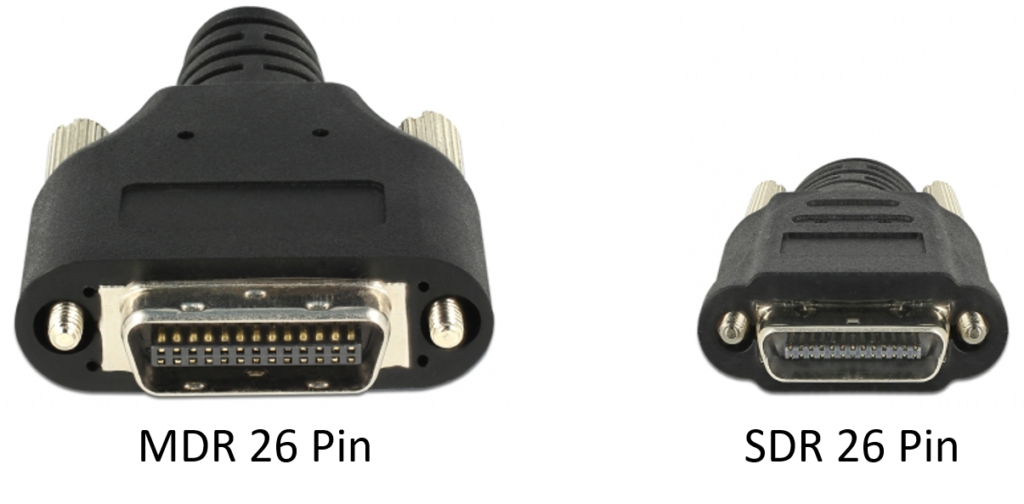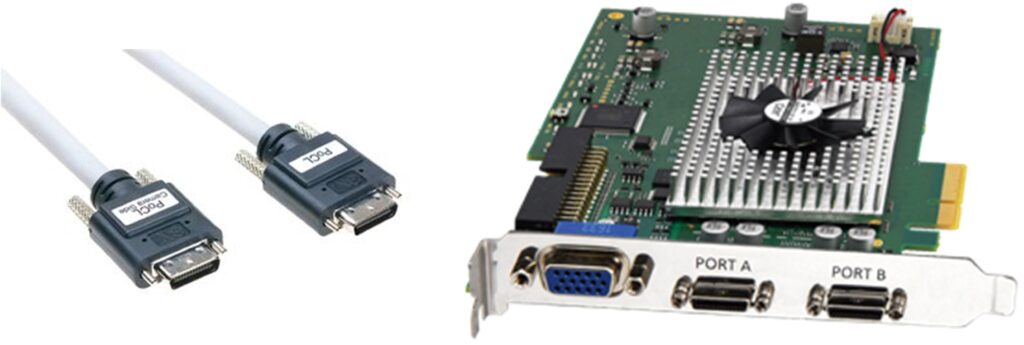Camera Link has been the workhorse of high speed industrial vision for almost 20 years however it remains a source of confusion for many vision integrators. Different standards, multiple cable configurations and frame grabber compatibility issues make Camera Link trickier to use than plug and play protocols such as USB3 Vision. This article demystifies Camera Link by reviewing its history, its capability and its role in modern computer vision.
Background
Following the advent of digital technology, there was a proliferation of proprietary digital communication protocols in the 1990s. This caused confusion due to widely varying implementations with minimal or no interoperability between them. The resulting cost of custom cables and the broad range of transmission formats were the driver behind the development of Camera Link. The AIA (Automated Imaging Association) released version 1.0 of the Camera Link standard in October 2000. The standard continues to progress with the publication of version 2.0 in 2011. Despite the introduction of more recent communication protocols, notably USB3 Vision and GigE Vision, Camera Link remains popular today for high speed, high resolution applications.

What Camera Link is and what it can do
Camera Link is a serial bus. Parallel signals in the camera are serialized into high-speed differential pairs which are transmitted across the cable. An input card in the receiving PC is used to de-serialize the data stream into parallel signals. This approach reduces cable size and cost and increases noise immunity and maximum cable length. As opposed to more recent protocols such as USB3 and GigE Vision, Camera Link is a non-packet based protocol and remains the simplest of the computer vision protocols.
The original ‘Base’ configuration of Camera Link used a single cable with an MDR-26 connector. This yielded a data rate of 2.04 Gbit/s (255 MB/s). As the speed of the underlying Camera Link bus is limited to 85 MHz, additional parallel communication channels are required to increase throughput. In light of this, the Camera Link Medium/Full configuration adds a second cable between the camera and the PC input card. Medium configuration doubles the Base configuration bandwidth to 4.08 Gbit/s (510 MB/s). Full configuration adds another 16 bits to the data path to provide 5.44 Gbit/s (680 MB/s). Some manufacturers have gone beyond the AIA Camera Link spec by adding further bits to the data path, creating the Deca configuration, also known as Extended-Full configuration. The Deca configuration provides 6.8 Gbit/s (850 MB/s).
The original Camera Link specification called for a MDR-26 connector. Since version 1.2 of the AIA standard, the ‘shrunk’ variant of the MDR-26 connector is permitted (SDR-26), which has gained popularity with camera and frame grabber manufacturers.

The Camera Link HS (CLHS) standard was released in 2012 and is also maintained by the AIA. Rather than extending the functionality of Camera Link, it is considered a new and separate standard. This new standard provides scalable bandwidths from 300 to 16 000 MB/s (2100 MB/s per cable up to eight cables). Various cable options are available for CLHS, the most popular of which is fiber optic technology providing up to 300 meters in cable length. CLHS can therefore provide extraordinary speeds at long distances however the increased cabling and PC input card costs are non-trivial.
Frame Grabbers
Camera Link is not a standard computer interface such as USB or Ethernet. It requires special hardware and drivers in the host PC to receive the Camera Link signal from the camera. An input card, known as a ‘frame grabber’ is installed in the host PC to provide the physical and electrical interface required, buffer incoming image data and perform optional pre-processing.

The requirement for a frame grabber has pros and cons. On one hand this adds cost to the application, especially when multiple cameras are involved. Typically one frame grabber is required per camera with prices around $1000 to $2000 per frame grabber. One the other hand, frame grabbers can perform pre-processing of image data and write data directly to the PC’s memory, reducing the load on the PC’s CPU. Recent frame grabbers have programmable FPGAs on-board which can execute powerful processing algorithms including Deep Learning based neural networks.
The role of Camera Link today
GigE Vision and USB3 Vision standards both use technologies well established in other markets which have been adapted specifically for vision applications. GigE Vision and USB3 Vision are cheaper and easier to use than Camera Link. Almost all PC hardware is GigE and USB3 capable out of the box, saving on the need for frame grabbers. Camera Link’s advantage, and why it has lasted so long, is its high data throughput rate. GigE Vision is theoretically capable of 1000 Mbit/s (125 MB/s) although this is usually limited to 800 Mbit/s in practice due to communication overheads. USB3 Vision is based on the USB 3.0 specification, giving 3.2 Gbit/s (400 MB/s). For high speed, high resolution applications therefore, Camera Link still has a role to play.
What about CoaXPress?
CoaXPress was introduced as the successor to Camera Link in 2008. It was endorsed by the AIA and EMVA to become an official international standard in 2011. Hosted by the JIIA, CoaxPress uses coaxial cables to provide data rates of up to 6.25 Gbit/s (781 MB/s) per cable. The more recent version 2.0 of CoaxPress doubles this, reaching 12.5 Gbit/s (1562 MB/s) per cable. CoaxPress is therefore an alternative to CLHS, providing similar data rates. It is too early to comment on the impact of CoaxPress in the market as significant adoption by camera and frame grabber manufacturers is just starting to pick up.
Conclusion
For high speed, high resolution applications which exceed the limits of GigE Vision and USB3 Vision, Camera Link continues to provide a solid solution with many camera and frame grabber options on the market. Due to Camera Link’s additional cost, especially through frame grabbers, its use is only justified when higher speed is required. CoaxPress is seeing more and more use but only time will tell if it displaces Camera Link and CLHS as the workhorse for high speed industrial vision.
